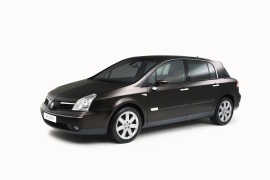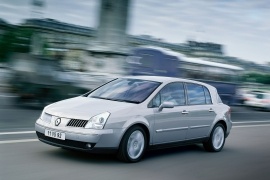RENAULT Vel Satis Models/Series Timeline, Specifications & Photos
First production year: 2002
Engines: Gasoline, Diesel
Body style: Hatchback
In 2005, Renault refreshed its largest luxury model, the VelSatis. A model that had to mark the comeback on the premium segment with an MPV-like vehicle.
Renault used to build high-quality vehicles and its name was among the most important in the luxury car industry before WWII. Its products were well received by the premium customers across Europe and it even succeeded to enter the U.S. market with re-badged products such as the Eagle Premier.
In 2002, the VelSatis came to replace the older Safrane model in the luxury segment. The unusual, high-roof vehicle provided generous interior room for front and, most important, for the rear passengers. The 2005 model brought new modification for the front grille, to have the same signature as the rest of the range. A particular design cue of the vehicle was that some of the exterior design accents were also found on the dashboard.
The interior of the VelSatis was particularly large, with high seating position thanks to its high-roof concept. New features such as Adaptive Cruise Control was offered. But the engineering side was one of its soft spots.
Under the hood, Renault offered two gasoline and three diesel units. All of them were front-wheel drive and the automatic transmission was with four gears. For the rear suspension, it featured a beam-axle, a unique feature for the premium segment. All of the other competitors offered independent rear suspension.
Renault introduced the Vel Satis as its flagship model in 2002, replacing the aging Safran lineup and stepping into the premium segment.
Renault was at the forefront of technology and a premium carmaker before WWII and has tried to get back again on that segment ever since. Yet, that didn't happen, and the eVel Satis lineup's introduction only worsened things.
The French carmaker considered that a new approach to the premium car market. Thus, the Vel Satis showed a unique, MPV-like look for that segment, with a tilted front area continued by a wide windshield. The front fascia sported a pair of vertical, triangular headlights, while the grille sported a wide center slat where the carmaker placed its chromed badge. Due to the minivan-shaped profile, the greenhouse was tall, and the big windows ensured an airy interior. At the back, the racked-forward windscreen covered the upper side of the tailgate.
The interior featured interesting touches with a few dashboard elements that showed similar shapes and colors found on the car's exterior. In the instrument cluster, Renault also placed the infotainment screen, which featured a navigation system, while at the bottom of the center stack, the carmaker put the HVAC control unit. The two front bucket seats were separated by a tall center console. At the back, the bench offered enough room for three passengers.
While the car's design was very controversial, the technical package was not at the same level as what other premium carmakers had on their offer. The engine ranged between a fuel-efficient but sluggish 2.2-liter turbo-diesel and a 3.5-liter V6 gasoline unit that didn't provide a decent fuel efficiency for those times. Last but not least, the semi-independent rear suspension system didn't offer an adequate comfort for the rear passengers.

